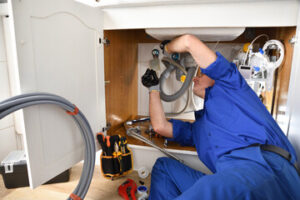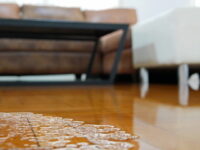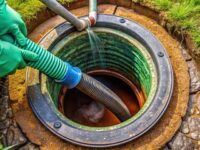Drain Cleaning – Understanding the Different Methods
Drain Cleaning Sarasota is an important aspect of maintaining a functional plumbing system and preventing issues like clogs and blockages. By understanding the various methods of drain cleaning, homeowners can take proactive steps to address clogs and prevent future problems.
Plungers are great for addressing minor clogs, while chemical drain cleaners (caustic, oxidizing, or acidic) work well on larger clogs. Other tools include mechanical drain snakes and hydro jetting.
Drain cleaning involves removing debris, clogs, and blockages from plumbing systems to ensure smooth wastewater flow. Regular drain cleaning can prevent problems from occurring and reduce the risk of costly repairs down the road. In addition, drain cleaning can help to remove foul odors from living spaces.
A clogged drain can be a major inconvenience and even a health hazard. Bacteria and other microorganisms thrive in stagnant water, which can cause a variety of ailments. In addition, clogged drains can lead to overflows, which may impact the environment and neighboring homes or businesses. Foul odors coming from drains can also be an indication of serious sewer line issues. Professional plumbers can identify and resolve these issues to ensure safe and effective drainage.
Severe clogs can require specialized tools to dislodge. One such tool is the hydro-jetting method, which uses high-pressure water to scour drain pipes and eliminate accumulated grease, residue, mineral deposits, and other contaminants. This method is particularly useful in hard-to-reach places or in cases where the use of chemical cleaners is not feasible. Hydro jetting can also be used to clear tree roots that have infiltrated a plumbing system.
For homeowners who prefer to avoid chemicals, a snake drain cleaner can be a good option. This device consists of a long piece of metal with a coiled wire at the end. It is inserted into the drain and pulled back and forth to break up and pull out the clog. The metal coils can also scrape the sides of pipes, preventing future build-up.
The baking soda drain cleaner is another easy-to-use home remedy. Mixing equal parts of baking soda and vinegar can be helpful for eliminating minor clogs. The acidity of the mixture can dissolve organic material, such as hair and soap scum, and the baking soda will help to remove the smell.
Regular drain cleaning can prevent a range of issues, from foul odors to expensive plumbing repair bills. The best way to prevent clogs is by incorporating a regular maintenance routine into your household chores. Incorporating drain inspections and cleaning into your annual home maintenance plan is a great way to identify potential problem areas before they become severe clogs or backups.
Tools
For basic drain clogs that don’t require professional intervention, there are a variety of DIY techniques that can get the job done. For instance, a simple mixture of baking soda and vinegar can dissolve most blockages, especially when followed by hot water. However, if these methods fail to work, it may be time for professional assistance.
There are a number of tools that plumbers use to remove stubborn clogs. These include drain snakes (manual or motorized), hydro-jetters, and augers. Each tool serves a specific purpose and targets different types of drain issues.
A manual drain snake is a long, flexible cable with a corkscrew-like end that allows plumbers to navigate through pipes and break down clogs. This tool is ideal for removing hair and other debris that commonly clogs showers and sinks. It is also useful for removing items that have been accidentally flushed down the drain, like jewelry, clothing, or children’s toys.
For clogs that are more serious, a motorized drain auger can be used to dislodge them. This tool works by inserting one end of the cable into the clog and cranking it, which causes the ends to drill through and break up the obstruction. The motorized version of this tool is more effective than the manual hand-crank version and is capable of tackling even the most stubborn of clogs.
Another way to tackle more severe blockages is to use a drain cleaning machine, which works by sending pressurized water through pipes. This can effectively remove a wide range of contaminants, including sludge, mud, and roots. It is particularly useful for eliminating clogs that are caused by grease, fats, and oils.
For recurring clogs, professional drain cleaning services can employ a method called relining. This involves placing a balloon-like bladder inside the pipe and filling it with water. Once the bladder is full, a special valve opens and releases the water. This creates a powerful stream of water that breaks down and washes away the clog, leaving behind a clean and functional pipe. The best part about this technique is that it doesn’t require the plumber to dig up any of your property, unlike traditional pipe replacement methods.
Chemicals
Chemical drain cleaners come in liquid, gel or powder form and break down hair, grease and food debris that clogs pipes. They usually have a caustic base like sodium hydroxide (lye) or alkaline substances that create a reaction with organic material to decompose it and release heat to melt fats. Some products also have abrasives to scour pipes clean.
They’re marketed as quick fixes for stubborn clogs and are sold at hardware stores, grocery stores and big box retailers. The corrosive chemicals in these cleaners can damage pipes, especially older ones made from metal or plastic (PVC). They’re also dangerous to use and require special safety precautions. They’re very toxic to touch and can burn if splashed on skin or eyes. They also can erode or weaken plastic pipe fittings and cause discoloration of pipes.
These cleaners are also bad for the environment. When flushed down the drain, they can contaminate water sources by leaching into rivers and streams. They can disrupt ecosystems and kill fish and other aquatic life. They can even contaminate drinking water. In addition, the bottles they come in often end up in landfills.
Acid drain cleaners have high sulfuric, muriatic or hydrochloric acid concentrations that attract electrons to break down clogs at a chemical level. These chemicals are extremely potent and can dissolve metal and damage PVC pipes as well as the rubber lining in septic systems. They’re also poisonous if ingested and can burn the mouth, throat and esophagus. They can also damage or discolor grout and kill beneficial bacteria in septic systems.
Oxidizing drain cleaners have bleach, peroxides or nitrates that release oxygen to break down organic material and kill germs. They’re effective against simple clogs such as hair but may not work on more durable blockages like grease. They’re also heavy, allowing them to sink through standing water and reach the clog.
Caustic drain cleaners have hydroxide ions and alkaline substances that generate heat to melt fats, decompose hair and break down other organic materials. They’re effective against a wide range of clogs but can eat away at pipes, especially those made from copper, galvanized steel or polyvinyl chloride (PVC).
There are many ways to unclog a drain other than using chemical cleaners. A professional plumber from bluefrog Plumbing + Drain can recommend the best method for your situation.
General Wire
Abe Silverman leveraged hard work, market savvy and inventive approaches to pioneer many key drain cleaning technologies. Today, his family’s company continues to serve plumbing, drain cleaning, maintenance, and rental professionals with “the toughest tools down the line.”
General Pipe Cleaners offers a full line of gas and electric drum-type drain cleaner machines. It also makes acoustical water leak location equipment, sewer inspection cameras and pipe freezing systems. Its patented thaw machines, pipe freezers and drain thawers are used by the world’s most successful contractors.
All General machines are built in the USA. They’re durable, reliable, easy to operate and maintain, and deliver excellent performance with minimum downtime. Using them correctly is the secret to success in any drain cleaning or inspection business.
For example, the Handylectric drain cleaner features a tough new plastic container and rugged new chuck that can take field abuse. It can be operated as a hand tool or powered by an electric drill. A special nozzle that converts the standard hose end into a chain saw cutting head enables technicians to cut roots in 4″ lines without having to remove and replace the machine’s cartridge.
Another innovative tool is the patented Kinetic Water Ram. It safely clears clogged toilets, baths and kitchen drains without the use of chemicals. The shock wave only exerts 98% of its force down the line, avoiding pipe walls and minimizing pressure buildup. It can even break up and remove ice blockages from kitchen, laundry and bathroom sink drains.
General’s durable Flexicore cable is an industry-standard for its strength and resistance to kinking. It’s made of heavy-gauge wire coiled tightly around a 49-strand aircraft quality wire rope, and has unequaled strength with just the right amount of flexibility. It helps plumbers get jobs done quickly with less kinking and downtime.






